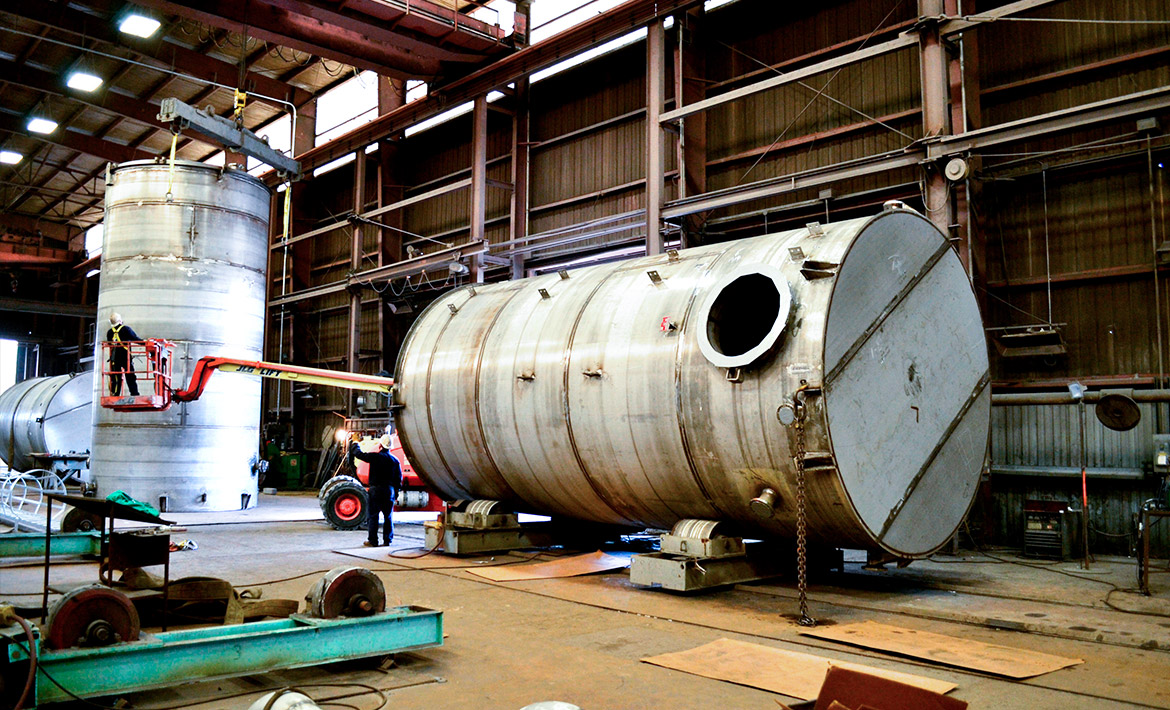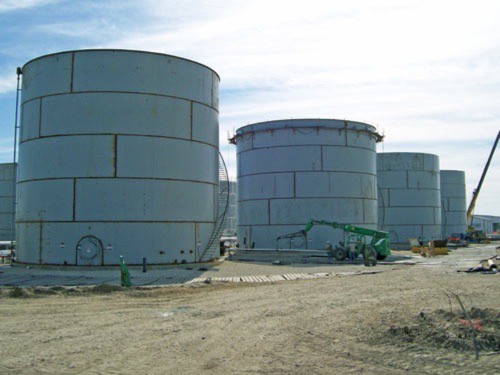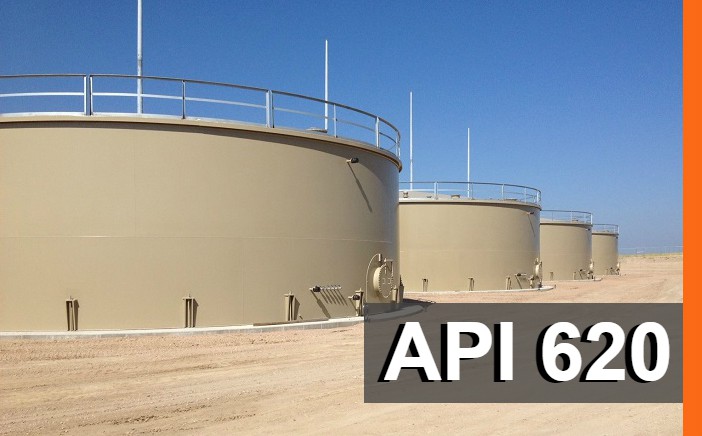Exploring API 650 Welding Inspection and Its Role in Weld Reliability
Exactly How Welding Assessment Works: A Comprehensive Guide for Professionals
Welding assessment plays a vital function in making certain the security and integrity of welded frameworks. It involves a methodical technique that includes both visual evaluation and progressed screening methods. Professionals must acquaint themselves with key standards and regulations governing the market. Understanding the typical flaws that can emerge throughout welding is important. This guide will check out these aspects in detail, giving understandings into the procedures that promote high quality and stability in welding.
Recognizing the Value of Welding Evaluation
While many may undervalue the value of welding inspection, it plays a necessary duty in making certain the honesty and safety and security of bonded frameworks. Efficient welding assessment identifies potential issues and flaws that can endanger structural stamina and cause disastrous failings. The assessment process encompasses various techniques, such as aesthetic exams, ultrasonic testing, and radiographic evaluations, each adding to the overall evaluation of weld top quality.
In enhancement to securing the architectural integrity, welding inspection guarantees conformity with industry requirements and client specs. By guaranteeing that welds meet needed resistances and qualities, examinations help keep the reliability and long life of elements in different applications, from building to aerospace. A strenuous inspection procedure fosters a culture of top quality and responsibility amongst welders and suppliers. Eventually, welding inspection is not just a procedural action; it is a crucial method that underpins the security and efficiency of engineered systems throughout varied sectors.
Trick Standards and Laws in Welding Inspection
The foundation of reliable welding evaluation rests on adherence to developed criteria and guidelines. Numerous organizations, such as the American Welding Society (AWS) and the American National Standards Institute (ANSI), established forth standards that ensure quality and safety in welding techniques. Key criteria, such as AWS D1.1 for structural welding and ASME Area IX for stress vessels, offer extensive standards for welding certifications, evaluations, and procedures. Governing structures, consisting of those from the Occupational Safety and Health And Wellness Management (OSHA), required security techniques and employee defenses in welding atmospheres. Conformity with these requirements is crucial for attaining regular weld top quality and lessening the threat of failures. Additionally, worldwide criteria like ISO 3834 additionally boost worldwide uniformity in welding assessment methods. Professionals need to remain educated concerning these guidelines to ensure that their inspection methods align with sector assumptions and lawful needs, thus protecting both personnel and architectural stability.
Initial Prep Work and Visual Inspection Techniques

Efficient welding evaluation starts with a detailed pre-inspection list that ensures all needed conditions are fulfilled before the actual assessment occurs. Following this preparation, aesthetic problem identification plays a vital function in evaluating weld top quality, allowing inspectors to spot issues such as fractures or incorrect blend. Together, these strategies create the structure for an effective welding assessment process.
Pre-Inspection Checklist
Before beginning any welding inspection, a detailed pre-inspection checklist is important to guarantee that all required preparations are completed which visual assessment methods are properly used. Crucial element of this list include validating the welding treatment specification (WPS), seeing to it all tools is adjusted and in great functioning condition, and validating that the assessor has the called for accreditations. In addition, it is important to review any type of previous assessment records and to analyze the workplace for safety risks. The examiner should likewise validate that all pertinent paperwork, such as product certifications and assessment records, is conveniently offered. Completing this list aids to establish a strong foundation for an effective inspection procedure, improving the reliability of the results gotten.
Aesthetic Problem Identification
A successful aesthetic issue identification process begins with cautious initial prep work and the application of well-known visual examination methods. Inspectors must guarantee that the welding area is well-lit and clean, as sufficient exposure is vital for identifying issues. A comprehensive evaluation of the weld joint's surface area enables the identification of discontinuities, such as cracks, damages, or porosity. Inspectors usually use tools like amplifying glasses or mirrors to boost their view of hard-to-reach locations. In addition, they must know with the particular welding standards and guidelines pertinent to the task. By sticking to these methods, assessors can effectively determine potential concerns, guarding the integrity of the weld and conformity with market requirements.
Non-Destructive Screening Methods: A Summary
Non-destructive testing (NDT) methods play an important role in the welding inspection process by ensuring the honesty and dependability of welded structures without causing any kind of damages (API 650 Welding Inspection). These methods permit inspectors to review the high quality of welds while preserving the elements being taken a look at. Usual NDT methods consist of ultrasonic screening, radiographic screening, magnetic fragment testing, and dye penetrant testing, each offering distinct benefits
Ultrasonic testing uses high-frequency audio waves to detect interior defects, while radiographic screening utilizes X-rays or gamma rays to visualize the internal framework of welds. Magnetic particle testing exposes surface and near-surface defects by using a magnetic area and iron fragments to the weld area. Color penetrant screening highlights surface-breaking problems via the application of a colored dye. With each other, these NDT approaches index give critical insights right into weld high quality, allowing specialists to make enlightened decisions pertaining to safety and compliance in welding applications.
Usual Flaws and Their Implications
Determining typical flaws in welded joints is crucial for maintaining structural honesty and safety and security. Various defects can emerge throughout the welding process, each carrying prospective implications for the general efficiency of the structure. Porosity, characterized by little gas pockets within the weld, can deteriorate the joint and endanger its load-bearing capacity. Cracks might create due to thermal stress or inappropriate cooling, resulting in possible failing under tension. Insufficient fusion takes place when the weld steel does not completely bond with the base product, leading to weak joints that may not withstand intended tons. Damaging, where the base steel is eroded, can additionally reduce the reliable cross-section of the weld. In addition, too much support can develop anxiety focus that could cause failing. Recognizing these problems promptly enables for restorative procedures, guaranteeing the durability and dependability of welded frameworks in important applications.
Tools and Equipment Made Use Of in Welding Examination
Reliable welding examination relies upon a variety of specialized tools and equipment to assure the high quality and integrity of welded joints. Vital tools consist of visual assessment tools, such as multiplying glasses and borescopes, which permit assessors to closely take a look at welds for surface area defects. Non-destructive testing (NDT) approaches, such as ultrasonic screening, radiographic screening, and magnetic particle screening, are fundamental for determining inner flaws without damaging the product.
Dimension devices, consisting of calipers and weld evaluates, assist assess dimensions and ascertain conformity with specifications. Additionally, firmness testers review the mechanical homes of bonded joints. Individual safety equipment (PPE) is likewise vital, securing the security of assessors while operating in potentially dangerous environments (API 650 Welding Inspection). Each device offers a details objective, jointly boosting the performance of welding examination and adding to the dependability of finished tasks
Often Asked Inquiries
What Certifications Are Needed to End Up Being a Welding Inspector?
To become a welding examiner, people normally require appropriate certifications, such as AWS CWI or CSWIP, together with experience in welding procedures, design concepts, and expertise of evaluation methods, security criteria, and applicable codes.
Exactly How Often Should Welding Inspections Be Conducted?
Welding evaluations need to be carried out consistently, preferably at various task stages, consisting of pre-weld, during-weld, and post-weld. Regularity might also rely on industry standards, job requirements, and the check my site complexity of the welds involved.
Can Welding Defects Be Fixed After Inspection?

Yes, welding defects can typically be repaired after assessment. Relying on the extent and sort of issue, appropriate approaches such as remodeling or added welding might be utilized to restore architectural honesty and safety conformity.
What Industries Require Regular Welding Inspections?

Various sectors, including building and construction, manufacturing, aerospace, and automotive, require normal welding examinations - API 650 Welding Inspection. These inspections guarantee adherence to security standards and quality assurance, decreasing risks connected with architectural integrity and operational efficiency in bonded components
How Do I Pick a Welding Evaluation Solution?
To choose a welding examination solution, one ought to consider certifications, experience, accreditations, and industry online reputation. Furthermore, assessing client evaluations and guaranteeing the service fulfills relevant requirements can aid guarantee top quality examinations and reputable outcomes.

While numerous may underestimate the significance of welding inspection, it plays an essential role in making sure the stability and safety and security of welded frameworks. Key requirements, such as AWS D1.1 for architectural welding and ASME Section IX for pressure vessels, supply comprehensive standards for welding treatments, evaluations, and certifications. Efficient welding evaluation begins with a thorough pre-inspection list that guarantees all necessary conditions are satisfied before the actual evaluation takes place. Before starting any Clicking Here type of welding evaluation, a thorough pre-inspection checklist is important to guarantee that all required prep work are completed and that aesthetic evaluation methods are successfully used. Non-destructive screening (NDT) techniques play an important function in the welding evaluation procedure by ensuring the stability and integrity of welded frameworks without creating any damages.